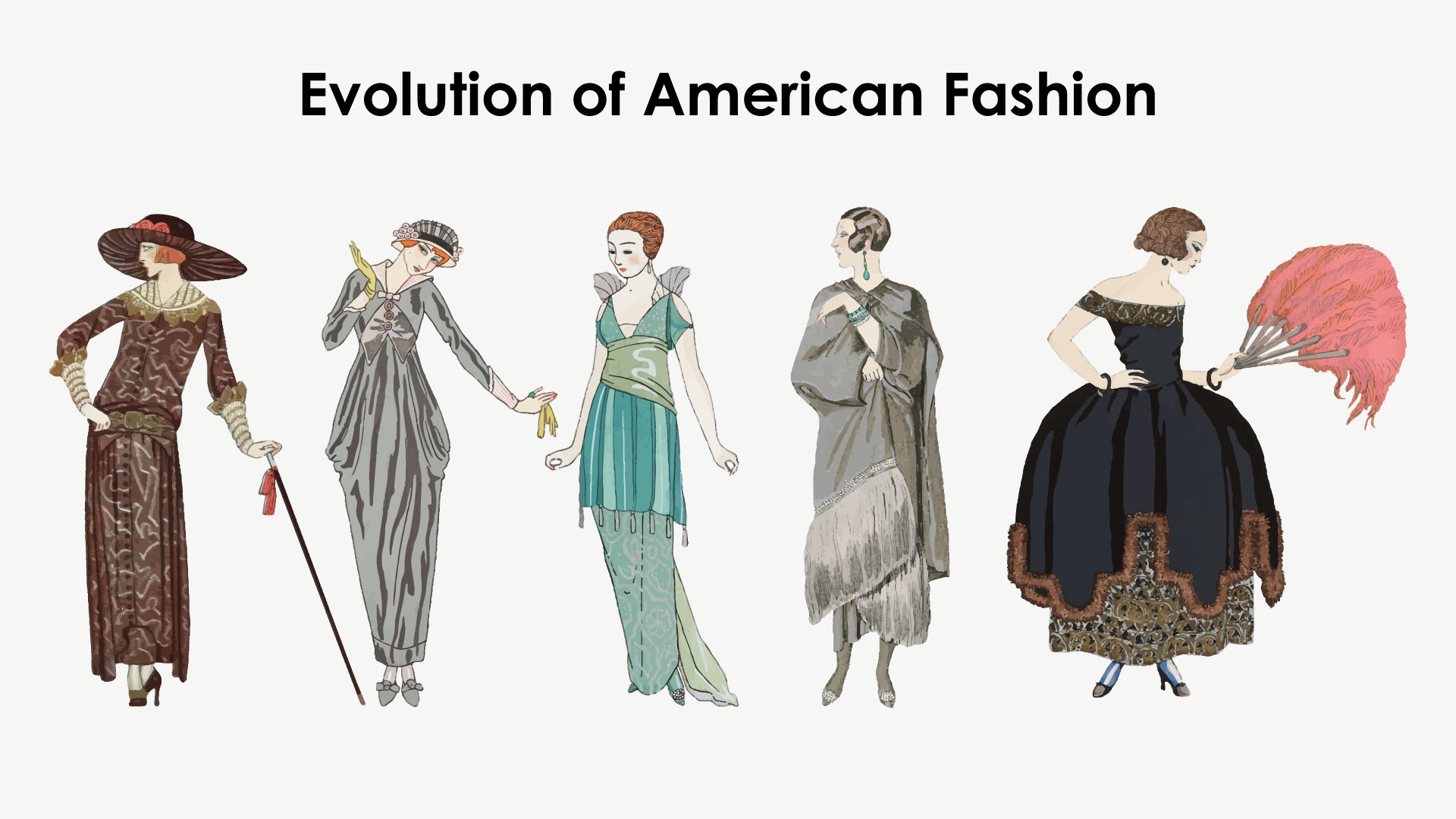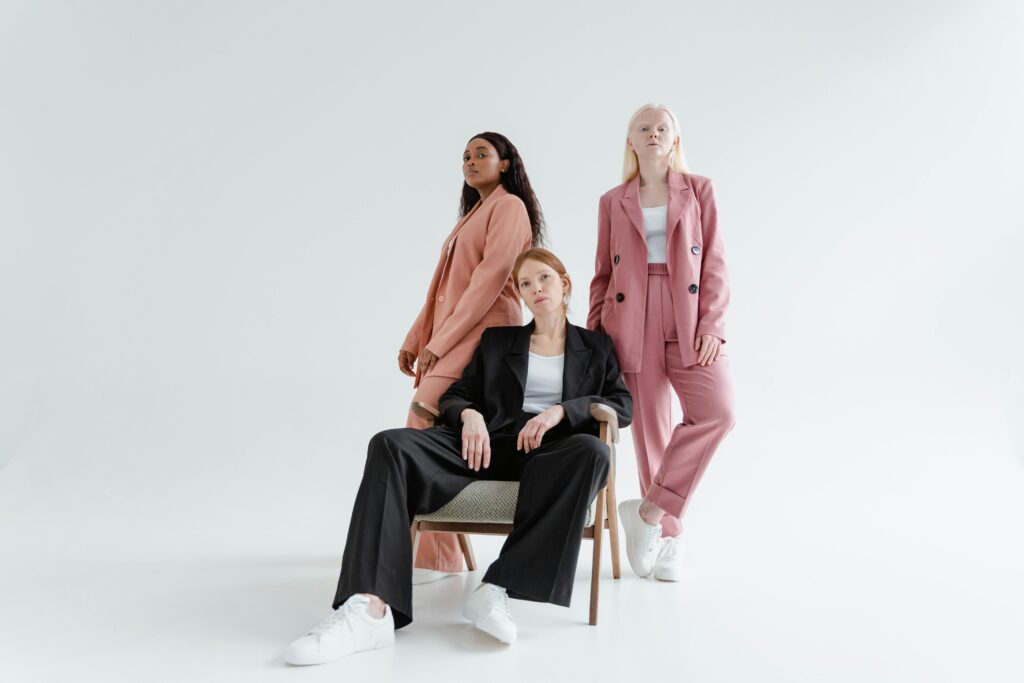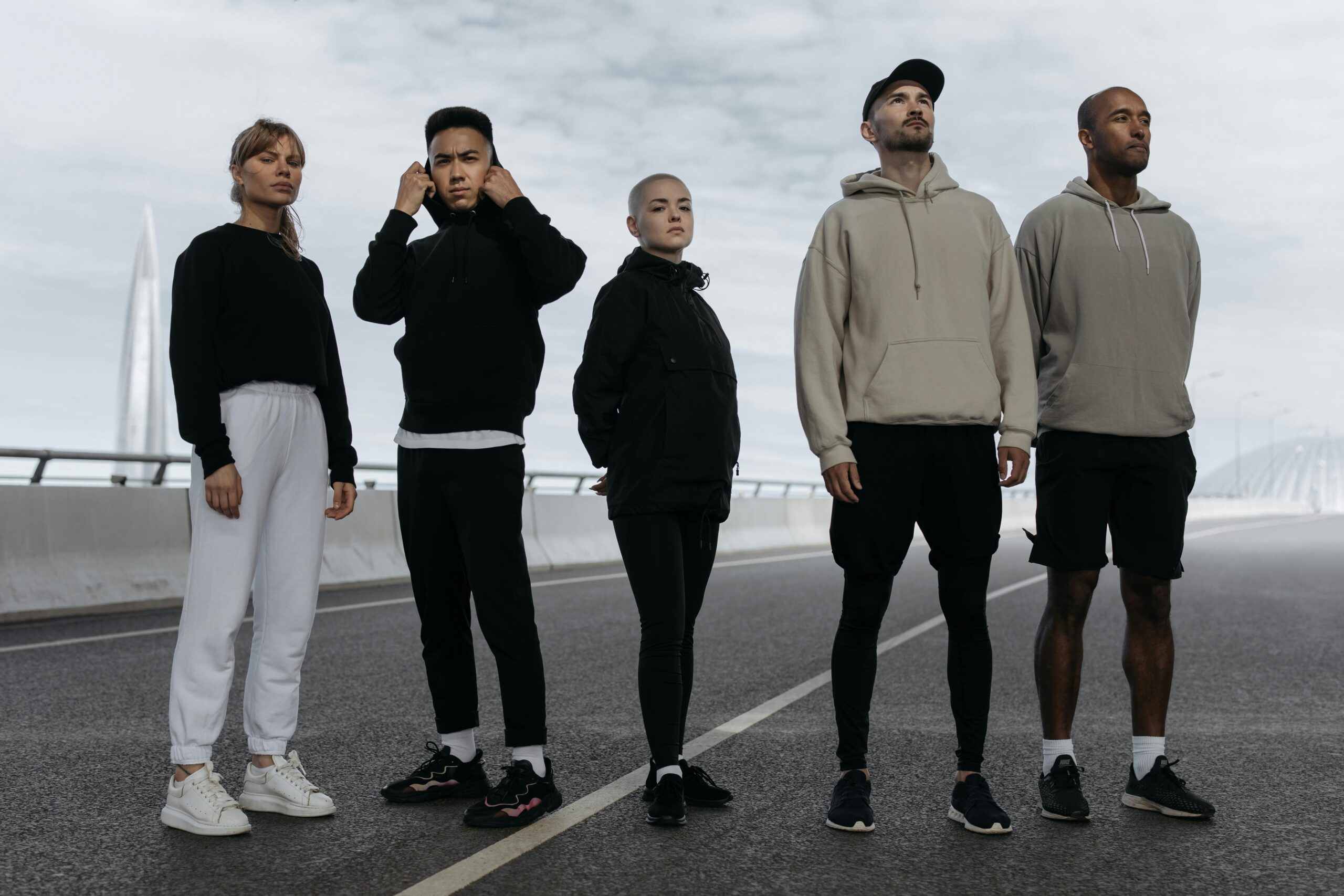American fashion emerges; what is it to you? To most people, American fashion portrays a denim jean, T-shirt, and, of course, that all-American look so dramatically personified by James Dean and Marilyn Monroe. But it is in this plunge into the world of modern American style that the evolution would be dramatic, so that years would start to blend together with thinking about a specific type of fashion, embracing diversity and innovation while sporting a unique point of view reflecting the complex culture of this vast nation.

Evolution of American Fashion
It is a colorful tapestry woven from the variety of influences on American fashion. Its relations trace origins back to Native American clothing, early colonial clothing, and European trends, all integrated with streetwear, although basically, the crux of fashion in the United States lies in intermingling multiple cultures and styles. During the 20th century, the USA saw special moments: the Harlem Renaissance, a testament to African American culture and fashion; the hippie movement of the ’60s and ’70s and breeding freedom and self-expression.
Fast-forward to the 21st century, and American style is both homage to tradition and leaping into innovation. Designers no longer take themselves hostage with restrictions from yesteryear but instead unite high-fashion elements with street style, sustainability with luxury, and vintage silhouettes with daring innovations. Discussing what characterizes American fashion at present, let’s first take notes on some of the trends that characterize the scene itself and the top models that stamp their mark on modern American style.

Casual Chic
Perhaps casual chic is the most defining trend in modern American fashion. Gone are the days when dressing up meant putting on a suit and tie or a ball gown. Today, American style places comfort at its forefront without sacrificing fashion. The modern woman’s wardrobe speaks to athleisure wear, an oversized blazer, chic loungewear-all subtly allowing one to change from brunch with friends to an afternoon of shopping.
Branding on the lines of Lululemon, Alo Yoga, and Reformation have really perfected the idea. These brands talk about good-quality material, sustainability, and functional aspects that cater to the needs of consumers who focus on both style and comfort. The new wave of “relaxed fashion” means that individuals can make more free-spirited expressions while enjoying the liberty of complete movement.
Sustainable Fashion Forward
Talking about sustainability is a very important step in helping shape the American fashion landscape. As consumers grow more conscious of the damage fast fashion is doing to our planet, brands are finally waking up to the call. The designers are now experimenting with eco-friendly materials, upcycling old garments, and adopting ethical practices when it comes to production.
Patagonia’s leadership places it in a league with a handful of other players in the space of sustainable fashion. But repair and reuse should be part of every single sustainable fashion brand’s DNA. The core benefit: the care of clothing instead of tossing it in the trash. This attitude speaks to today’s younger generations who value not just style but also ethical responsibility. That’s why, as we see more brands practicing similar philosophies, sustainability is fast becoming the hallmark of American style.

The Influence of Streetwear
Today, streetwear has turned into an integral part of the fashion in the USA, influencing contemporary American style significantly. Rooted within the urban culture, streetwear is rich with ingredients from skate, surf, hip-hop, and graffiti art. Among these, the brands Supreme, Off-White, and BAPE are some of the successful examples that have captured the fashion enthusiasts’ and casual wearers’ hearts while blurring the line that separates luxury from everyday clothing.
In another way, streetwear is exciting due to its exclusivity, creativity, and camaraderie. Its exclusiveness is maintained through limited-edition drops, whereby high-profile designers would do collaborations and even garner endorsements from celebrities. All top models such as Kendall Jenner and Gigi Hadid are often seen wearing streetwear outfits, thereby indicating how this genre is no longer limited to the streets but has been embraced by the upper echelons of fashion.
Diversity and Inclusivity
America, in its newly defined fashion, has finally evolved to be more diverse and representative. The new wave of fashion promotes the standpoint of different cultures and their designs in voice and style, retaining all of the kaleidoscope that represents America. Great leaders in this style are designers such as Brandon Maxwell and Rihanna from Savage X Fenty, which advocate for body positivity and self-expression.
Ashley Graham, Tess Holliday plus-size models, is the game-changer for redefining beauty standards in America’s catwalk. Inclusiveness has thrown the doors more open for personalities and numerous types of bodies to sink their teeth into this fashion world which constantly changes each passing season. Understated elegance, bold statements-today there is vast variety that expresses one’s style regardless of body shape or size.
Gender Fluidity in Fashion
However, perhaps one of the most thrilling trends in American style is gender fluidity: a fashion that could very well be nongendered. Many of today’s designers are moving away from strict binary gender norms in their collections and instead catering to all genders. This will reflect the ideal place for clothing: an individual’s expression being something that reflects themself and not influenced by the societal norm.
This is something fashion designers, such as Thom Browne or Haider Ackermann, try to explore in terms of unisex collections, since the classic definition of men and women’s apparel has been put to question. Models like Lexie Castillo and Jaden Smith are a part of this movement, using the platform to call for a more fluid expression of personal style in the direction of gender-neutral fashion. Gender-neutral fashion isn’t just a trend but, rather, defines a deep cultural shift in the current fashion world, redefining identity.
Celebrity Influence
Celebrities have been a formative influence in American fashion, and by the year 2024, that influence is more potent than ever before. Big social media, including Instagram and TikTok, have turned models and influencers from overnight sensation into trendsetters. Such personalities with such power have transformed them into the most pivotal players where the perception of America, in the American culture, is now consumed fashion.
Along with many others, Bella Hadid and Tyra Banks have emerged as standard-bearers for American fashion. They define and further blur the lines of the red carpet, carry the burden of marketing fashion brands, and dictate decisions regarding daily wardrobes. The look-at-me ease of social media means that anyone can be included in this movement, which has partly democratized views about fashion. No longer the bailiwick of the catwalk, it is shared among common Americans.
Emerging Trend of Localism in American Fashion
In the overall globalized world, localism could be the emerging trend in American fashion. More and more individuals are becoming open to spending money on local artists and artisans, giving people a sense of the community and authentication. As far as this particular movement is concerned, it advocates for handmade goods, craftsmanship, and the story behind the piece itself.
The Renegade Craft Fair, local pop-up shops, and other markets really bring out the talents of artisans across the USA. Localism gives off that truly unique, one-of-a-kind find you can only really resonate with on a personal level, steering away from cookie-cutter pieces that rule when it comes to mass-produced fashion.
The Future of American Fashion
So, what does the future of American fashion hold? As we look forward, we can expect growing trends driven by digital fashion, inclusivity, and sustainability. Virtual fashion and digital clothing thoughts are beginning to take over, in the form of NFTs and virtual wardrobes. Brands are already experimenting with digital showrooms, virtual try-ons, and the way they come into contact with the consumer.
As ongoing discussions pertaining to social and ecological responsibility set the tone, sustainable practices will continue to become an increasingly integral part of business models. Diversity will likely continue to grow in its demand for reflection of the society of today as well.
Conclusion
American fashion today reflects the culture and spirit of its people. From casual chic to sustainable practices, the assertive voices for diversity and gender fluidity-all of this defines modern American style. It thrives through top models, renowned designers, and everyday folk who use clothes to delineate themselves.
Whether it is the streetwear attractiveness, the chic of ecologically sustainable style, or the statements to be bold about gender fluidity, American fashion undoubtedly doesn’t suffer from a lack of colors, dynamism, and change. As we celebrate this reality, let’s embrace the different identities it fosters, take a step forward into what is next on the horizon for American fashion, and believe in it enough to make that future possible. For, after all, fashion is about who you are and what you have to tell through the style.
 What Is American Fashion Today? Exploring Modern… May 24, 2017
What Is American Fashion Today? Exploring Modern… May 24, 2017  10 Questions on the Future of the Fashion Industry May 23, 2017
10 Questions on the Future of the Fashion Industry May 23, 2017  More Than Just a Hobby May 24, 2017
More Than Just a Hobby May 24, 2017  Will Christiano Ronaldo Beat Mr. Beast On YouTube? October 18, 2024
Will Christiano Ronaldo Beat Mr. Beast On YouTube? October 18, 2024  50 of the best blogs for graphic design inspiration May 24, 2017
50 of the best blogs for graphic design inspiration May 24, 2017  15 Top Moisturizers For Glowing Skin, Recommended by… October 18, 2024
15 Top Moisturizers For Glowing Skin, Recommended by… October 18, 2024 
